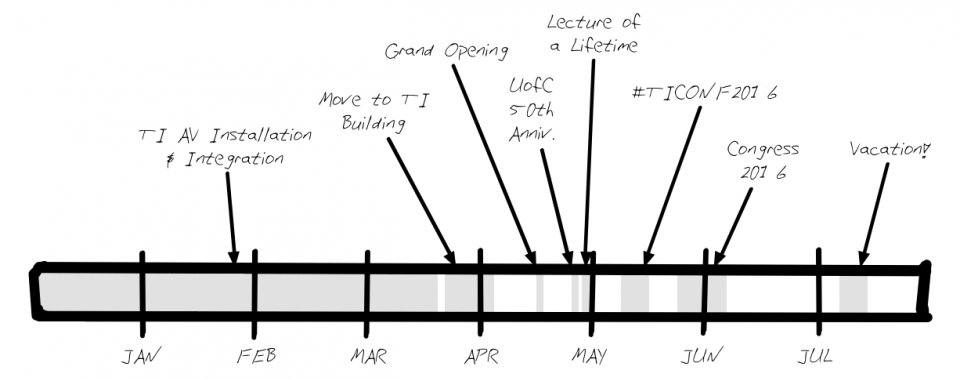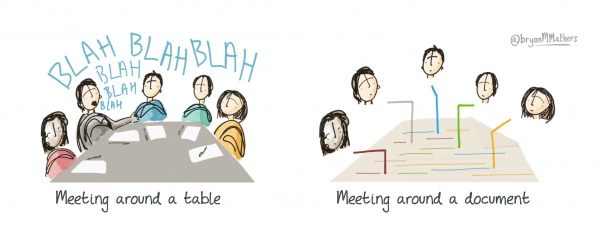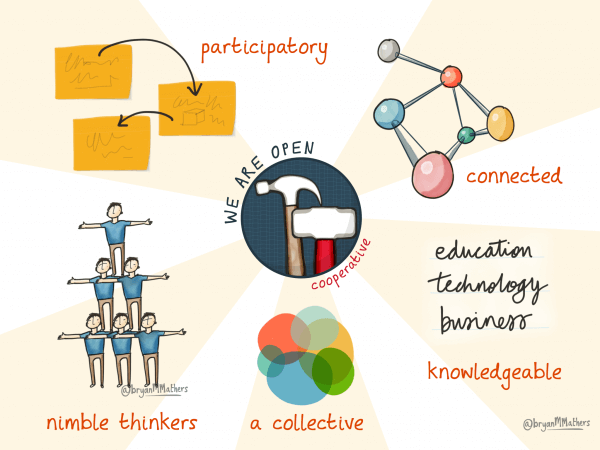I like driving, even if I end up sitting in traffic. I enjoy doing the laundry, and take my time folding shirts just so. I volunteer to wash the dishes. After all, each of these activities is an excuse to listen to more podcasts.1
I’ve been listening to podcasts for over a decade now; I don’t remember exactly when I got started but it was around the time that Apple Took Podcasting Mainstream: that’s from the title of the press release announcing iTunes support for podcasts in 2005. Given that most podcasts were listened to on iPods (thus the name) that already synced with iTunes, Apple’s move dramatically simplified the distribution of podcasts: simply click a button in the music management app you already used, hook up the iPod as you already did, and voilà! New podcasts ready to be listened to in the car (via your cassette tape adaptor), while doing laundry, washing the dishes, etc. It was great!
It also was not in the slightest bit mainstream: according to Edison Research, in 2006 only 22% of Americans were even familiar with the term “podcasting”, and only 11% had ever listened to one. Both numbers have slowly but steadily grown over the years (55% have heard of podcasting as of this year, and 36% have listened to one, and there actually isn’t a readily apparent ‘Serial’ bump), aided in large part by the smartphone: by removing the need to sync with iTunes it was much easier to have fresh podcasts at the ready. Still, there remained the challenge of creating compelling content, discovering content worth listening to, retaining listeners and, of course, paying for it all.
Podcasting Versus Blogging
Late last year Joshua Benton wrote that Podcasting in 2015 Feels a Lot Like Blogging Circa 2004:
Podcasting is giving me a case of déjà vu…The variety and quality of work being done is thrilling; outside attention is growing; new formats are evolving. We’re seeing the same unlocking of creative potential we saw with blogging, and there’s far more good work being produced than anyone has time to take in. The question now is whether podcasting’s future will play out as the last decade of blogging has.
It’s a good observation, but there are important differences if you look into the various factors I alluded to above:
- Creation: Blogger was released back in 1999, and WordPress in 2003; both required some level of acumen, but significantly less than recording and mixing a podcast takes today. It’s also very complicated to get a show actually listed in iTunes. This means, by extension, that for all the great podcasts there are today, there were that many more blogs.
- Distribution: Blogs could be read via URLs typed in a browser that everyone already used. Podcasts are much more complicated: you either have to search a 3rd-party podcast player’s directory (iTunes or self-contained) to add a show, or copy-and-paste a feed address. Alternately, you can simply listen on a website, but that is a suboptimal experience to say the least.
- Discovery: In 2004 most blogs were found from links on more popular blogs; today new blogs are usually discovered on social networks. Podcasts, meanwhile, really struggle here: yes, iTunes has a front page and a blackbox ranking system, but the requirement to download a file and spend time listening makes it hard to spread virally. Many podcasts are instead built off of established brands like NPR or the personal brands of the podcast hosts.
- Retention: Back in 2004 most blog readers returned via bookmarks; more advanced users leveraged RSS readers that polled sites for new content and downloaded it in a feed. Today, most readers rely on social network posts that may or may not be seen. Interestingly, it is here that podcasts have an advantage: because they are built on RSS, anyone who “subscribes” through a podcast player downloads podcasts automatically and even gets notifications, making for a very sticky and loyal audience.
- Monetization: Blogging had a brief honeymoon period where you could actually make money with Google AdSense, but revenue soon plummeted as inventory drastically increased; more devastating, not just for bloggers but all publishers, was Facebook’s absorption of not just what used to be blogging content but also publishing dollars. Increasingly, the best option for publishers is to simply publish directly to Facebook and let them sell ads.
The monetization of podcasts, meanwhile, deserves a deeper dive.
The Problem with Monetizing Podcasts
Podcasting is still a tiny business: according to the Wall Street Journal podcasts only attracted $34 million in advertising revenue last year, about 1/100th the amount spend on billboards (This number is disputed by many of the bigger podcasters, but the highest estimate I’ve seen is $200 million, i.e. 1/15th of billboards). The biggest player in the podcast advertising market is a company called Midroll Media, which was acquired by E.W. Scripps last year for $50 million (with a $10 million earn-out).
Midroll sells ads for over 200 podcasts, including some of the most popular ones like WTF with Marc Maron and the Bill Simmons Podcast. The not-so-secret reality about podcast ads, though, are that advertisers are quite concentrated: a FiveThirtyEight intern heroically listened to the top 100 shows on the iTunes chart and counted 186 ads; 35 percent of them were from five companies.2 More tellingly, nearly all of the ads were of the direct marketing variety.
A major challenge in podcast monetization is the complete lack of data: listeners still download MP3s and that’s the end of it; podcasters can measure downloads, but have no idea if the episode is actually listened to, for how long, or whether or not the ads are skipped. In a complete reversal from the online world of text, the measurement system is a big step backwards from what came before: both radio and TV have an established measurement system for what shows are watched, and the scale of advertising is such that surveys can measure advertising effectiveness. Thus the direct marketing advertisers: they can simply do the measurement themselves through coupon codes or special URLs that measure how many people responded to a podcast ad. It’s not totally efficient — some number of conversions forget the code or URL — but it’s something.
It also won’t scale. For the advertisers that exist the implication of measuring by code or URL is that every single podcast needs customized support, limiting advertising opportunities to bigger podcasts only. More importantly, there simply aren’t that many advertisers with the sort of business model that can justify the hassle. The real money in TV and especially radio is brand advertising; brand advertising is focused on building affinity for a purchase that will happen at some indefinite point in the future, so the focus is less on conversion and more on targeting: knowing in broad strokes who is listening to an ad, and exactly how many people. For podcasting to ever be a true moneymaker it has to tap into that — and that means changing the fundamental nature of the product.
Midroll Makes Their Move
Yesterday Scripps/Midroll made another acquisition, this time of the podcast player Stitcher. From the Wall Street Journal:
Stitcher is a free app that streams more than 65,000 podcasts from publishers ranging from NPR to MSNBC to The Wall Street Journal. It will operate under Midroll Media, the podcast advertising company that Scripps acquired last year…
“We certainly have the ad sales force and the connections that make us a leader in the space, but today we depend almost exclusively on distribution into other channels,” said Adam Symson, chief digital officer at Scripps. “This puts in place, with a very strong brand, another piece of the puzzle in the ecosystem play.”
As new listeners and shows enter the podcast world, companies in the space have been contending with a handful of industry challenges, like measuring audience size and wooing big brand marketers. “For the first time we’ll have significantly more ability to help with podcast discovery, to help with distribution, to help shows grow, and to help find out what audiences want in a way that we could not do before,” Mr. Diehn said.
Stitcher is thought to be the 2nd most popular podcast player, although it has long been controversial in some circles for its default practice of hosting podcasts itself (instead of directing users to download them directly from a podcaster’s server) and inserting ads. That model, though, was likely attractive to Scripps/Midroll: controlling the files and the player means the possibility of making meaningful measurements of play data plus dynamic ad insertion at scale.
Moreover, Midroll’s leading role in advertising combined with Scripps’ bank account mean the company could offer big bucks to leading podcasters to make themselves exclusive to Stitcher, driving users to the measurable app to the long-term benefit of the company’s efforts to attract brand advertisers. To be very clear, there are a lot of obstacles to this actually happening, but the idea of there being a central aggregator for podcasts that locks in podcasters through superior monetization and listeners through exclusive content is both plausible and attractive from a business perspective.
Publishers Beware
Popular podcaster and blogger Marco Arment has been particularly vocal about the problems with this approach; more pertinently, Arment says he built the Overcast podcasting app to resist this outcome:
Podcasts are hot right now. Big Money is coming. Big Money isn’t going to sell nicely designed, hand-crafted, RSS-backed podcast players for $2.99 or ask you to pay what you want to support them, because that doesn’t make Big Money. They’re coming with shitty apps and fantastic business deals to dominate the market, lock down this open medium into proprietary “technology”, and build empires of middlemen to control distribution and take a cut of everyone’s revenue…I don’t know if Overcast stands a chance of preventing the Facebookization of podcasting, but I know I’m increasing the odds if my app is free without restrictions. As long as I can make money some other way, I’m fine.
That phrase — “the Facebookization of podcasting” — should send chills down the spine of all the publishing companies jumping headfirst into podcasting. Publishers are already “serfs in a kingdom that Facebook owns” by virtue of the fact that Facebook owns user attention and has superior advertising capabilities. And yet many publishers are so focused on finding new income streams that they are practically begging for exactly what Arment fears.
Early last month the New York Times suggested many publishers hoped the Facebook of podcasting would be Apple; thanks to that 2005 release the company and its directory remain the center of the podcasting industry, and iTunes and its iOS podcast app are are responsible for a reported 65 percent share of podcast listeners. Indeed, this is the biggest reason to doubt Midroll’s plans: as difficult as it can be to corral advertisers, switching the habits of millions of listeners in the face of a default experience is far more difficult.
A Third Way
All that said, I’m not sure the status quo of podcasters hosting their own MP3 files listed in a (relatively) open directory mostly ignored by Apple is sustainable, or even desirable: relatively large independent podcasters like Arment may prefer the current setup, but there is an increasing amount of money and agitation for building something that looks a lot like Midroll’s presumed plans for Stitcher. Apple itself, with its dominant position in podcasting and its newfound focus on services revenue in the face of declining iPhone sales, is not only well-placed but also increasingly motivated to fill that role itself.
More importantly, though, for publishers podcasting really is a great opportunity to build something sustainable. In Grantland and the (Surprising) Future of Publishing I explained how media companies need to expand their thinking about monetization:
Too much of the debate about monetization and the future of publishing in particular has artificially restricted itself to monetizing text. That constraint made sense in a physical world: a business that invested heavily in printing presses and delivery trucks didn’t really have a choice but to stick the product and the business model together…
Focused, quality-obsessed publications [should]…collect “stars” and monetize them through…alternate media forms. Said media forms, like podcasts, are tough to grow on their own, but again, that is what makes them such a great match for writing, which is perfect for growth but terrible for monetization.
Go back to the five factors that go into effective media: both text and podcasts are relatively easy to create, but text is much easier to distribute and discover; the most effective podcasts, meanwhile, are those driven by brands or personalities; podcasts in general are great at retaining loyal listeners; and their monetization potential is much higher if the measurement can be figured out.
A Stitcher/Apple-type solution does help on that last point, but it still makes distribution and discovery harder than they should be: a publisher has to tell its readers to go to a different app, search for their name, subscribe, and then depend on that 3rd party app for monetization and measurement. Wouldn’t it be better if the publisher simply did that themselves?
I think there is a third way here, that preserves independence but starts to solve the monetization and measurement problem: publishers should offer podcasts through their own app that measures listens, and either sell ads themselves if they have the scale or outsource it to a company like Midroll.3 Midroll, for their part, should leverage their new player technology to offer skinnable apps for publishers who can’t build their own. The end result would be a much smoother path for publishers to convert their readers to listeners — and to effectively cross-promote — along with the measurement and scale needed to grow advertising meaningfully (or even offer subscriptions).4
I know this breaks the modern concept of podcasting, and power users with tens of subscriptions in their podcasting player of choice will be annoyed if they have to download multiple apps. Often, though, a solution that works for power users is actually prohibitive for normal users, and the other solution — a Facebook of podcasts — would be worse for everyone. Just look at what happened to RSS readers: yes, Google killed them, but it was only ever used by a fraction of readers before then because they were too difficult; Facebook, on the other hand, was easy.5 Fortunately for publishers, the challenges of podcast discovery and distribution actually make apps the easiest choice of all.6
There are plenty of good reasons why the publishing world ended up subservient to Facebook, but to answer Benton’s question as to “whether podcasting’s future will play out as the last decade of blogging has”, I don’t think it has to. The limitations of audio relative to text actually work to the publishers’ advantage in a way that the portability of text did not, and this may be their last chance to build destinations that people will wash the dishes in order to visit.
- I mostly listen to sports podcasts, primarily NBA, so no need to email for my list of recommendations

- Squarespace had 30, Stamps.com 12, Audible 11, MailChimp 8, and Dollar Shave Club 5
- I’m using Midroll as a standin, but this role could be filled by any company
- Also, there’s no need for publishers to fear the App Store: Apple doesn’t take a skim off of advertising, and the App Store infrastructure would actually make subscriptions viable
- To be clear, I love RSS! And it underpins a lot of the web, including Facebook Instant Articles. But I’m talking about the mass market and monetization
- Yes Newsstand was a failure; however, the entire premise of this article is that text is different than audio


























 Perhaps the biggest change in the new version is one we expect folks won’t even notice: simpler, safer recording for the AAC and Apple Lossless formats. Audio Hijack now avoids the need for finalization at the end of recording with these formats, by saving them as so-called “fragmented” MP4s. These files are internally consistent at all times, which means there’s no processing delay at the end of long recordings and ensures that even a power outage won’t cause lost audio. With this change, Audio Hijack’s recordings are more bullet-proof than ever before.
Perhaps the biggest change in the new version is one we expect folks won’t even notice: simpler, safer recording for the AAC and Apple Lossless formats. Audio Hijack now avoids the need for finalization at the end of recording with these formats, by saving them as so-called “fragmented” MP4s. These files are internally consistent at all times, which means there’s no processing delay at the end of long recordings and ensures that even a power outage won’t cause lost audio. With this change, Audio Hijack’s recordings are more bullet-proof than ever before.
 Last year, we worked with the folks over at Take Control Books to help them create an in-depth guide to Audio Hijack. Audio expert Kirk McElhearn produced the Take Control of Audio Hijack eBook, and since then, it’s helped thousands of users make the most of Audio Hijack. Today, the book has received an update for the changes in Audio Hijack 3.3, so if you already have the book, be sure to download the just-released 1.1 edition.
Last year, we worked with the folks over at Take Control Books to help them create an in-depth guide to Audio Hijack. Audio expert Kirk McElhearn produced the Take Control of Audio Hijack eBook, and since then, it’s helped thousands of users make the most of Audio Hijack. Today, the book has received an update for the changes in Audio Hijack 3.3, so if you already have the book, be sure to download the just-released 1.1 edition.









